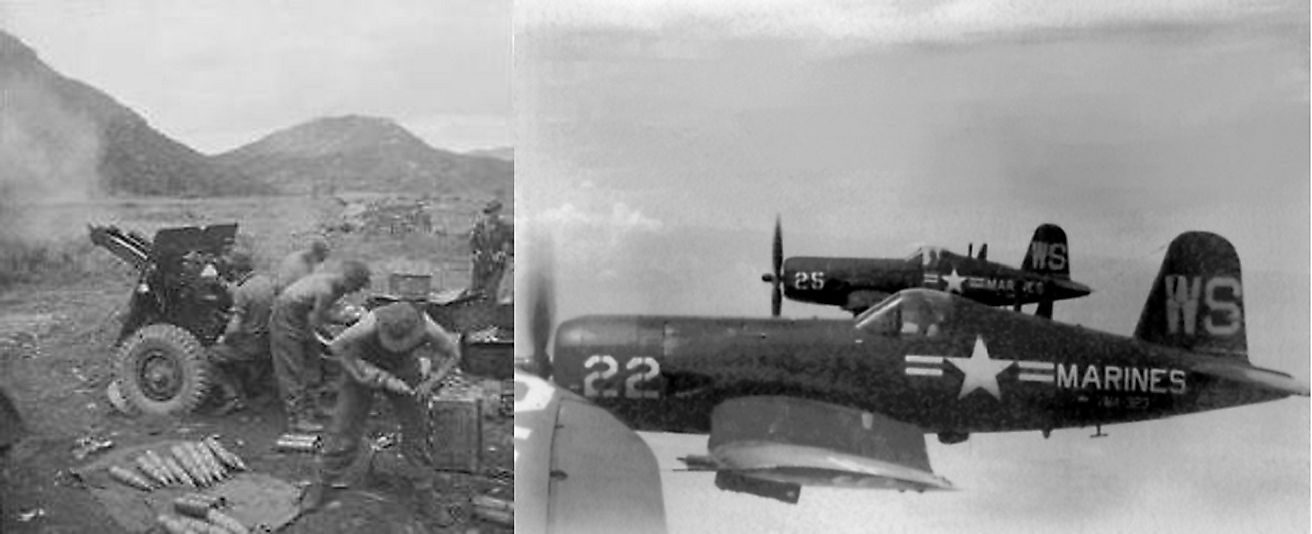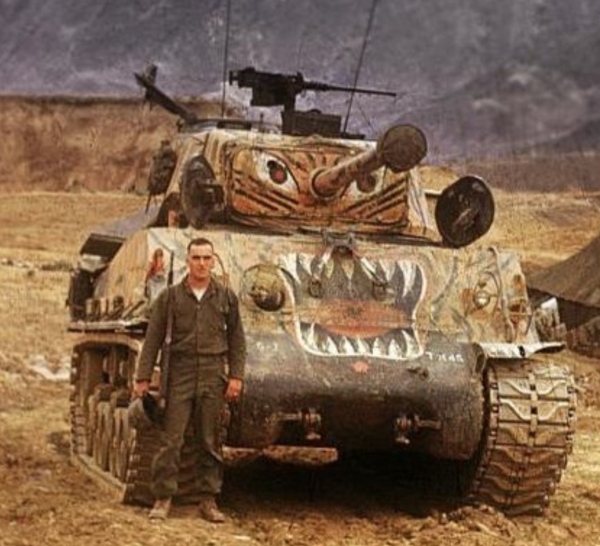


The defile was near a curve in the road, and the advancing enemy armor would be well within range before they spotted the Pershings. His tank had a problem with its elevation mechanism, so it stayed back. He selected a narrow spot in the road and placed three of his tanks side by side, so if the enemy destroyed his vehicles, their wrecks would block the defile and stop the enemy advance. Sweet ordered his tanks forward as each finished topping off. The tanks pulled back to refuel, but at 8 PM, they received the message code “Flash Purple,” indicating an impending tank attack. The day’s fighting ended, and the Americans set up defenses for the night. The NKPA 4th Infantry Division opposed the Marines with a battalion of the 109th Tank Regiment assisting them in turn. The platoon was led by Lieutenant Granville Sweet. The 5th Marines were assigned to take Obong-Ni ridge, known to the Marines as “No-Name Ridge.” Supporting them were four M-26 tanks of the 1st Platoon, Company A of the 1st Marine Tank Battalion. By mid-August they were ready to throw the North Koreans back. NKPA pressure on the Pusan Perimeter weakened as American strength increased. Taking No-Name Ridge: Four M-26 Tanks vs. The two tanks had never met in combat before, but it was hoped the M-26’s 90mm gun and thick armor would prove a match for the Soviet vehicle. These tanks were hurriedly readied for service to provide a counter to the NKPA’s Soviet-Supplied T-34 tanks, which had so far ranged almost unopposed against the light tanks and anti-tank weapons available to their opponents. The brigade included a small M-26 tank force for support. One of the units sent into the Pusan perimeter was the 1st Marine Provisional Brigade, an ad hoc unit formed to get a force into the fight quickly while the 1st Marine Division properly formed up. That perimeter was steadily being reinforced, with an eye toward an eventual breakout and counteroffensive. The opposing South Korean and American forces, weak and unprepared, were pushed into a shrinking perimeter around the small port city of Pusan. The North Korean People’s Army (NKPA) had almost everything going its way during the earliest Korean War battles.


 0 kommentar(er)
0 kommentar(er)
